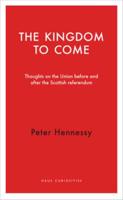Publisher's Synopsis
In this timely new book, Carolyn Smith develops a methodology for the study and criticism of presidential press conferences. Moving away from the traditional method of studying the presidential rhetoric of prepared speeches, Smith proposes methods of criticism for the quasi-spontaneous environment of the press conference where the control of messages is divided between the president and the press. The book offers a detailed critical assessment of Ronald Reagan's relationship with reporters during his eight years in office. From this assessment, Smith develops her approach to press conference criticism. She proposes the development of standards by which to judge good, bad, and indifferent press exchanges and focuses on the internal dynamics of press conferences as they now exist. Noting that presidential press conference reform has been tried several times with a general lack of success, Smith points out that these press conferences, whatever their deficiencies, are valuable records worth understanding.
The book explores the nature of the presidential press conference and the fundamental importance of the adversarial relationship between the president and the press. Smith includes a valuable summary of the history of the adversarial press conference focusing on those aspects that have made the press conference an institution and an inherently adversarial public encounter. She then puts forth an approach for criticism of the press conference accounting for both the president and the press. Finally, using her own approach, Smith offers sample criticism of Ronald Reagan's press conferences and his relationship with reporters during his first 69 days in office. Students and scholars of journalism, rhetoric, political science, and communication will find Presidential Press Conferences valuable reading.










